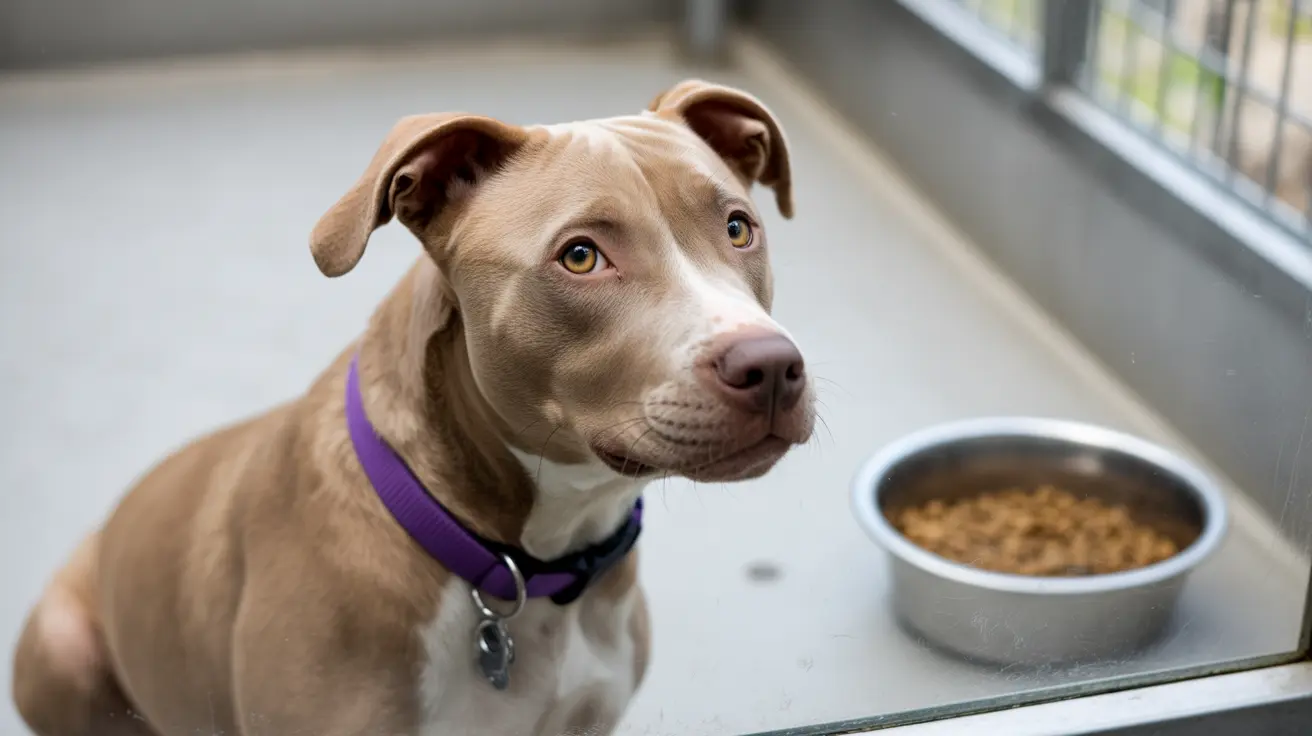Werwolf Syndrome in Dogs: Understanding the Mysterious Neurological Condition Affecting Canines Across Europe
A mysterious neurological condition known as Werwolf Syndrome has emerged across Europe, leaving veterinarians puzzled and dog owners deeply concerned. This sudden-onset condition has been affecting dogs with severe behavioral and neurological symptoms that appear without warning, creating panic among pet communities from Germany to Switzerland. Since August 2024, cases have been reported simultaneously across multiple European countries, making this syndrome one of the most concerning veterinary mysteries of recent times.
The syndrome's name reflects the dramatic transformation dogs undergo during episodes – from beloved family pets to seemingly unrecognizable animals displaying extreme aggression, panic, and neurological distress. What makes Werwolf Syndrome particularly alarming is its sudden appearance across vast geographical areas and its apparent connection to contaminated pet products, specifically certain dog chews imported from China. Understanding this condition is crucial for every dog owner, as early recognition and intervention can make the difference between recovery and tragic outcomes.
This comprehensive guide will help you recognize the warning signs of Werwolf Syndrome in dogs, understand the suspected causes, and know exactly what steps to take if your canine companion shows symptoms. We'll explore the latest research findings, examine the role of contaminated pet products, and provide essential safety guidelines to protect your dog from this devastating condition.
What Is Werwolf Syndrome in Dogs?
Werwolf Syndrome is a recently identified neurological condition that causes sudden, severe behavioral and physiological changes in dogs. The syndrome manifests as acute episodes of neurological distress that can transform a normally calm dog into an animal experiencing intense panic, aggression, and seizure-like symptoms. Unlike typical anxiety or epilepsy in dogs, Werwolf Syndrome appears suddenly without any identifiable external triggers and affects multiple body systems simultaneously.
The condition has been documented across several European countries, including Germany, Switzerland, the Netherlands, Denmark, Belgium, and the UK, with authorities in each nation issuing warnings and product recalls. What distinguishes this syndrome from other neurological conditions is its apparent connection to specific contaminated dog chew products, particularly those manufactured in China and sold under brands like Barkoo and Chrisco.
Research efforts are being coordinated internationally, with institutions like the Small Animal Clinic at the University of Veterinary Medicine Hannover (TiHo) leading investigations. The syndrome's sudden emergence and geographical spread have prompted regulatory agencies across Europe to work together in identifying the root cause and preventing further cases.
Recognizing the Symptoms of Werwolf Syndrome
The symptoms of Werwolf Syndrome in dogs are distinct and alarming, often appearing without warning in previously healthy animals. Pet owners should be aware of these key warning signs that differentiate this condition from common behavioral issues or standard epilepsy.
Primary Neurological Symptoms
Dogs affected by Werwolf Syndrome typically display sudden, unprovoked aggression that is completely out of character for the animal. This aggressive behavior is often accompanied by extreme fearfulness, creating a paradoxical state where the dog appears both threatening and terrified simultaneously. Affected animals may exhibit excessive barking, crying, and howling that seems uncontrollable and distressing.
Hyperactivity and restlessness are common, with dogs unable to settle or find comfort in familiar environments. Many dogs develop destructive behaviors, particularly excessive chewing of furniture, walls, or other household items. These behaviors appear compulsive rather than attention-seeking, suggesting neurological involvement rather than behavioral issues.
Seizure-Like Episodes and Physical Manifestations
Muscle spasms and seizures are frequently reported in dogs with Werwolf Syndrome. These episodes can range from mild tremors to full-body convulsions and may last several minutes. Unlike typical epileptic seizures, these episodes often occur in clusters and may be accompanied by the behavioral symptoms mentioned above.
Panic attacks are another hallmark of the condition, with dogs showing signs of extreme distress, panting, drooling, and attempting to hide or escape. Some dogs display what appears to be hallucination-like behavior, reacting to stimuli that aren't present or staring intensely at empty spaces.
Duration and Progression
Episodes can last from several minutes to weeks, with some dogs experiencing recurring symptoms despite traditional epilepsy treatments. The unpredictable nature of symptom duration makes the condition particularly challenging for both owners and veterinarians to manage. In severe cases, the syndrome can be fatal, making prompt recognition and treatment crucial.
Suspected Causes and Contaminated Products
Current research strongly suggests that Werwolf Syndrome is linked to contaminated dog chew products, particularly those made from animal skin and imported from China. This connection has led to numerous product recalls across European countries as authorities work to identify and remove potentially dangerous items from the market.
Implicated Products and Brands
The primary suspects are dog chews manufactured under brands like Barkoo and Chrisco. Specific products that have been recalled include Barkoo kaustange natur (29 cm), Barkoo knotted chew bones (11 cm, 12 cm with spirulina, 24 cm), and various Chrisco chew rolls with chicken and chicken liver, including police baton-style treats. These products are typically made from cattle hide or other animal skin materials processed in Chinese facilities.
Authorities have provided specific packaging codes and barcodes to help consumers identify potentially contaminated products. The recalls have been coordinated across multiple countries, with agencies like the Food Standards Agency (FSA) in the UK and various European regulatory bodies working together to track and remove dangerous products.
Potential Contaminants
While investigations are ongoing, suspected contaminants include mycotoxins (mold toxins), chemical residues from processing, and various allergens that could trigger severe neurological reactions. The exact toxic agent has not been definitively identified, but the pattern of symptoms and the connection to specific imported products suggests a common contamination source.
Historical analogies have been drawn to canine hysteria or fright disease linked to toxic substances in dog food from the early 20th century, suggesting that food-borne neurological poisoning in dogs, while rare, is not entirely unprecedented.
Immediate Actions for Dog Owners
If you suspect your dog is showing signs of Werwolf Syndrome, immediate action is crucial for the best possible outcome. The steps you take in the first few hours can significantly impact your dog's recovery and prevent the condition from worsening.
Emergency Response Protocol
First, ensure your safety and that of others in your household. Dogs experiencing Werwolf Syndrome episodes may display unpredictable aggression, so approach with caution and avoid restraining the animal unless absolutely necessary for safety. Remove other pets and children from the area to prevent injuries.
Contact your veterinarian immediately or seek emergency veterinary care. Specify that your dog is experiencing sudden neurological symptoms that may be related to Werwolf Syndrome. This information will help the veterinary team prepare appropriate treatment protocols and safety measures.
Product Investigation and Removal
Immediately stop feeding any dog chews or treats to your pet, especially those made from animal hide or imported products. Collect any remaining chew products, including packaging, as this information will be valuable for veterinary diagnosis and potential reporting to regulatory agencies.
Document the products your dog has consumed recently, including brand names, purchase dates, and where the products were bought. This information can help veterinarians make connections to the syndrome and contribute to ongoing investigations.
Monitoring and Documentation
Keep detailed records of your dog's symptoms, including the time of onset, duration of episodes, and specific behaviors observed. Video documentation can be particularly helpful for veterinarians to assess the severity and type of neurological involvement.
Current Research and Treatment Approaches
The Small Animal Clinic at the University of Veterinary Medicine Hannover (TiHo) is leading research efforts into Werwolf Syndrome, working to understand the condition's causes, develop diagnostic protocols, and establish effective treatment strategies. Their work emphasizes the importance of immediate neurological evaluation for symptomatic dogs.
Diagnostic Approaches
Veterinary neurologists are developing specific diagnostic protocols for Werwolf Syndrome that differ from standard epilepsy or anxiety assessments. These protocols focus on ruling out other neurological conditions while identifying the characteristic symptom patterns associated with the syndrome.
Current diagnostic efforts include detailed history-taking focused on recent diet and treat consumption, neurological examinations to assess the extent of nervous system involvement, and monitoring response to specific treatments that have shown success in confirmed cases.
Treatment Protocols
Early findings suggest that some dogs recover well with targeted symptomatic treatment combined with complete avoidance of suspected contaminated products. Treatment approaches focus on managing neurological symptoms while supporting the dog's overall health during recovery.
Unlike standard epilepsy treatments, which may not be fully effective for Werwolf Syndrome, veterinarians are developing syndrome-specific protocols that address the unique nature of this condition. The emphasis is on supportive care and symptom management while the suspected toxins clear from the dog's system.
Prevention and Product Safety Guidelines
Preventing Werwolf Syndrome centers on careful selection of dog treats and chews, with particular attention to product sourcing and manufacturing standards. Pet owners can significantly reduce their dog's risk by following specific safety guidelines when choosing consumable pet products.
Safe Product Selection Criteria
Choose dog chews and treats from reputable manufacturers with transparent sourcing and manufacturing processes. Avoid products from unknown international sellers or unverified online sources, as these may lack proper quality control and safety testing.
Natural, high-quality treats sourced from reliable suppliers are recommended as safer alternatives to imported processed chews. Look for products manufactured in countries with strict pet food safety regulations and clear labeling of ingredients and origin.
Ongoing Vigilance
Monitor your dog for any sudden behavioral or neurological changes, especially after introducing new treats or chews. Early detection of symptoms allows for prompt veterinary intervention, which can significantly improve outcomes for affected dogs.
Stay informed about product recalls and safety warnings issued by regulatory agencies in your country. Following official veterinary and regulatory guidance is essential for keeping your pet safe from this and other emerging health threats.
Regulatory Response and International Coordination
The emergence of Werwolf Syndrome has prompted an unprecedented coordinated response from regulatory agencies across Europe and beyond. The Food Standards Agency (FSA) in the UK, various European food safety authorities, and research institutions like Agroscope in Switzerland are working together to track, investigate, and prevent further cases.
Monitoring and Reporting Systems
Veterinarians are being asked to report suspected cases to appropriate agencies to help track the syndrome's spread and identify new patterns or connections. This reporting system is crucial for understanding the full scope of the problem and preventing additional cases.
The Food and Drug Administration (FDA) in the US is monitoring the situation, although no confirmed cases have been reported in America. This international vigilance helps prevent the syndrome from spreading beyond its current geographical boundaries.
Research Collaboration
International research collaboration is analyzing implicated products and working to identify the specific toxic agents responsible for the syndrome. This research is essential for developing better detection methods, treatment protocols, and prevention strategies.
Frequently Asked Questions
What makes Werwolf Syndrome different from regular dog epilepsy?
Werwolf Syndrome differs from typical epilepsy in several key ways. Unlike epilepsy, which usually responds to standard anti-seizure medications, Werwolf Syndrome episodes may continue despite traditional epilepsy treatments. The condition also combines seizure-like symptoms with extreme behavioral changes like unprovoked aggression and panic attacks, which are not typical of standard epilepsy. Additionally, the syndrome appears suddenly without warning in previously healthy dogs and is linked to specific contaminated products rather than genetic or developmental factors.
Are certain dog breeds more susceptible to Werwolf Syndrome?
Current research has not identified any specific breed predisposition for Werwolf Syndrome. The condition appears to affect dogs regardless of breed, age, or size, suggesting that the susceptibility is related to exposure to contaminated products rather than genetic factors. All dog owners should remain vigilant regardless of their pet's breed.
How quickly do symptoms appear after a dog consumes contaminated treats?
The timeline for symptom onset can vary, but symptoms typically appear suddenly without warning. Some dogs may develop symptoms within hours or days of consuming contaminated products, while others may take longer to show signs. The unpredictable nature of symptom onset makes it crucial to monitor dogs closely after introducing any new treats or chews.
Can dogs recover completely from Werwolf Syndrome?
Early research findings suggest that some dogs can recover well with prompt veterinary care and complete avoidance of suspected contaminated products. Recovery appears to depend on early detection, appropriate treatment, and the removal of the toxic source from the dog's environment. However, the severity and duration of symptoms can vary significantly between individual cases.
Is Werwolf Syndrome contagious between dogs or to humans?
Werwolf Syndrome is not contagious between dogs or transmissible to humans. The condition is believed to be caused by consuming contaminated products rather than infectious agents. There is no evidence that the syndrome poses any risk to human health, and dogs cannot spread the condition to other pets or family members.
What should I do with suspected contaminated dog treats in my home?
If you have dog treats or chews that match the descriptions of recalled products, stop using them immediately and store them safely away from pets. Keep the packaging and product information, as this may be valuable for veterinary diagnosis if your dog shows symptoms or for reporting to regulatory agencies. Contact your veterinarian for guidance on whether testing or reporting is necessary.
Are there any safe alternatives to traditional dog chews?
Yes, natural, high-quality treats from reputable manufacturers with transparent sourcing are safer alternatives. Look for products manufactured in countries with strict pet food safety regulations and clear ingredient labeling. Avoid imported chews from unknown sources, and consider alternatives like fresh vegetables, specially formulated dental chews from trusted brands, or treats recommended by your veterinarian.
Conclusion
Werwolf Syndrome in dogs represents a serious and emerging veterinary challenge that requires immediate attention from pet owners, veterinarians, and regulatory agencies. The syndrome's connection to contaminated dog chews, particularly those imported from China, highlights the critical importance of careful product selection and ongoing vigilance in pet care. While the condition is rare, its severe neurological impact and potential for fatal outcomes make awareness and prevention essential for every dog owner.
The key to protecting your dog lies in understanding the warning signs, choosing safe products from reputable sources, and seeking immediate veterinary care if symptoms appear. As research continues and international cooperation expands, our understanding of Werwolf Syndrome will improve, leading to better prevention strategies and treatment options. Until then, staying informed, following regulatory guidance, and maintaining close relationships with veterinary professionals remain the best defenses against this mysterious condition that has affected canines across Europe.






